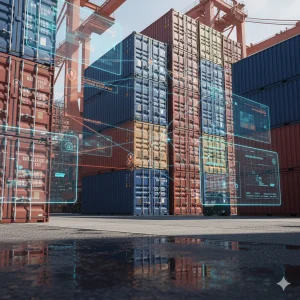In an era of real-time transactions, real-time risk demands real-time solutions.
As financial ecosystems grow more interconnected, sanctions screening has shifted from a back-office function to a frontline defense mechanism.
But the world has changed.
Sanctions lists are no longer updated monthly or even weekly—they’re updated as events unfold. A geopolitical flashpoint, a new executive order, or a sanctions regime shift can lead to the immediate designation of hundreds of entities overnight.
For institutions operating across borders—especially in fintech, crypto, or cross-border payments—reactive or periodic screening is no longer enough. Delays in detecting a sanctioned entity or counterparty can lead to frozen assets, fines, or worse: permanent reputational damage.
Real-time sanctions screening isn’t about compliance alone—it’s about operational resilience, trust, and risk agility.
Static Screening Can’t Keep Up with Global Risk Velocity
For years, many organizations relied on scheduled sanctions checks—daily, weekly, or even at onboarding alone. These batch-processing models may have worked in low-risk, low-volume environments. But they simply don’t meet the demands of today’s dynamic risk landscape.
Here’s why that approach is failing:
- Sanctions are now geopolitical tools used to enforce foreign policy. This means they’re fast-changing, high-volume, and globally complex.
- Delays in list refresh mean your system could unknowingly clear a newly sanctioned entity.
- Manual reviews can’t scale, especially when lists contain thousands of names with varying spellings, languages, and affiliations.
- Cross-border transactions happen in seconds, and sanctions violations can occur before traditional systems even update.
In this environment, static screening becomes not just inefficient—it becomes a vulnerability.
Why Real-Time Screening Matters Now More Than Ever
Sanctions compliance has evolved from a regulatory checkbox to a live operational concern.
The reasons aren’t just legal; they’re structural.
Penalties Are Steep & Rising
Enforcement is no longer symbolic.
Financial regulators have shown a growing willingness to penalize both large and mid-sized firms for sanctions failures, even those caused by delays or oversight.
Violations can lead to:
- Multi-million dollar fines, including secondary sanctions
- Asset freezes and license suspensions
- Terminated correspondent banking relationships
- Public disclosures, damaging brand trust
More importantly, many regulators now assess not just whether you screened, but whether you did so with reasonable speed, accuracy, and intent. That’s where real-time systems provide critical defensibility.
Sanctions Are Expanding in Scale and Scope
Today’s sanctions are broader and more unpredictable than ever.
Institutions must now monitor for:
- Traditional targets (e.g., weapons manufacturers, state actors)
- Private corporations connected to national governments
- Individuals with dual identities, shell companies, or family-controlled firms
- Crypto wallet addresses and smart contract interactions
- Sector-specific restrictions (e.g., tech exports, aviation, digital finance)
Real-time screening ensures you’re not just compliant with one list but thousands of global, sector-specific, and frequently updated lists—all without manual intervention.
Sophisticated Actors Use Delay to Their Advantage
Sanctioned individuals and entities don’t wait to be caught. They act fast, and they act strategically.
Common evasion tactics include:
- Using aliases or foreign language variants
- Transacting through unsanctioned intermediaries or shell firms
- Structuring transactions just below scrutiny thresholds
- Exploiting the update delay in legacy systems
Real-time, intelligent screening helps identify these patterns before a transaction clears, allowing organizations to block or escalate immediately, not after the damage is done.
What Real-Time Sanctions Screening Looks Like in Practice
Real-time screening isn’t just faster—it’s fundamentally smarter.
It blends high-frequency list updates, AI-driven pattern matching, and contextual alert management to detect risk as it happens, not hours or days later.
Here’s what top-tier compliance teams implement:
Continuous Watchlist Synchronization
A core requirement is ingesting updated sanctions data from all relevant jurisdictions, continuously, not just at login or batch intervals.
This includes:
- Integration with over 1,300+ global lists (OFAC, UN, EU, OFSI, etc.)
- Automatic refresh every few minutes or via push updates
- Support for multilingual and fuzzy matching (e.g., transliterations, aliases)
- Re-screening existing records when a list changes, in real time
This ensures you’re not just screening at onboarding—you’re screening every second.
Real-Time Pre- and Post-Transaction Monitoring
Modern systems don’t wait until end-of-day reconciliations.
They screen:
- At onboarding, to block risky customers or partners
- At the point of payment initiation, before funds are moved
- Continuously for repeat transactions, vendors, and counterparties
When a potential match is found:
- Transactions are paused instantly
- A case is generated with contextual risk data
- Alerts are triaged based on severity and regulatory obligations
This reduces liability by ensuring no prohibited interaction slips through undetected.
Smart Alert Management and Escalation
Real-time screening systems generate thousands of alerts. But without intelligent prioritization, you risk drowning in noise.
Key capabilities include:
- Relevance scoring (e.g., confidence match vs. false positive)
- Custom thresholds based on jurisdiction, transaction value, or customer type
- Tiered routing to specific analysts or automated workflows
- Time-stamped audit trails of every action taken
This gives your team clarity, speed, and traceability—especially under audit pressure.
Audit-Ready Reporting and Documentation
Modern regulators don’t just want to know that you flagged a transaction—they want to know:
- What list triggered the match
- When your system detected it
- Who reviewed it, and what action did they take
- Whether similar matches have occurred in the past
Real-time systems log every detail, generating exportable reports by geography, match type, or case outcome, making compliance not just real-time, but provable.
How IDYC360 Powers Real-Time Sanctions Defense
At IDYC360, we designed our sanctions solution for the world you operate in—fast, complex, and unforgiving.
Here’s how we support compliance teams on the front lines:
- Real-time integration with 1,300+ live-updating global lists
- AI-powered entity matching to reduce false positives and catch hidden links
- Pre- and post-transaction screening for real-time risk mitigation
- Smart escalation rules tuned to your risk appetite and jurisdiction
- Full audit logs of every decision, alert, and review
- Seamless integration into your KYC, onboarding, or payment stack via API
Whether you’re a fintech onboarding global users, a payments firm managing high-volume cross-border flows, or a financial institution expanding into new jurisdictions, IDYC360 ensures you stay fast, compliant, and audit-ready.
Final Thoughts
Global risk doesn’t wait!
In a world of rolling designations, live transactions, and regulatory crackdowns, delayed screening is dangerous screening.
Real-time sanctions screening helps you:
- Catch risk before it becomes liability
- Reduce alert fatigue and analyst load
- Prove diligence under pressure
- Maintain trust with regulators and partners
The cost of delay is too high. The answer is speed, accuracy, and transparency.
That’s the promise—and the power—of real-time sanctions screening.
Ready to Stay
Compliant—Without Slowing Down?
Move at crypto speed without losing sight of your regulatory obligations.
With IDYC360, you can scale securely, onboard instantly, and monitor risk in real time—without the friction.











